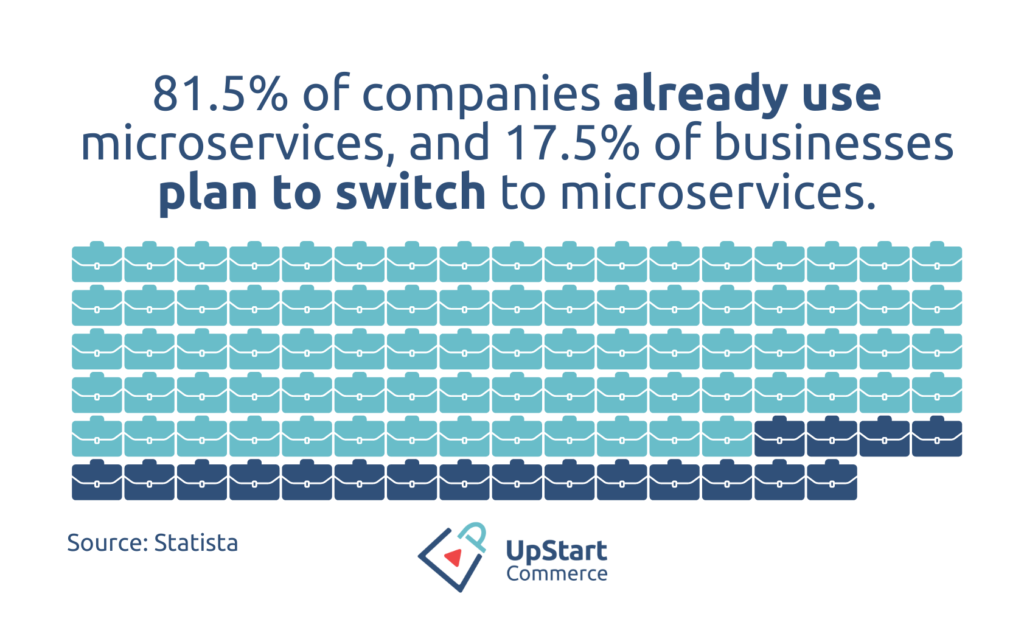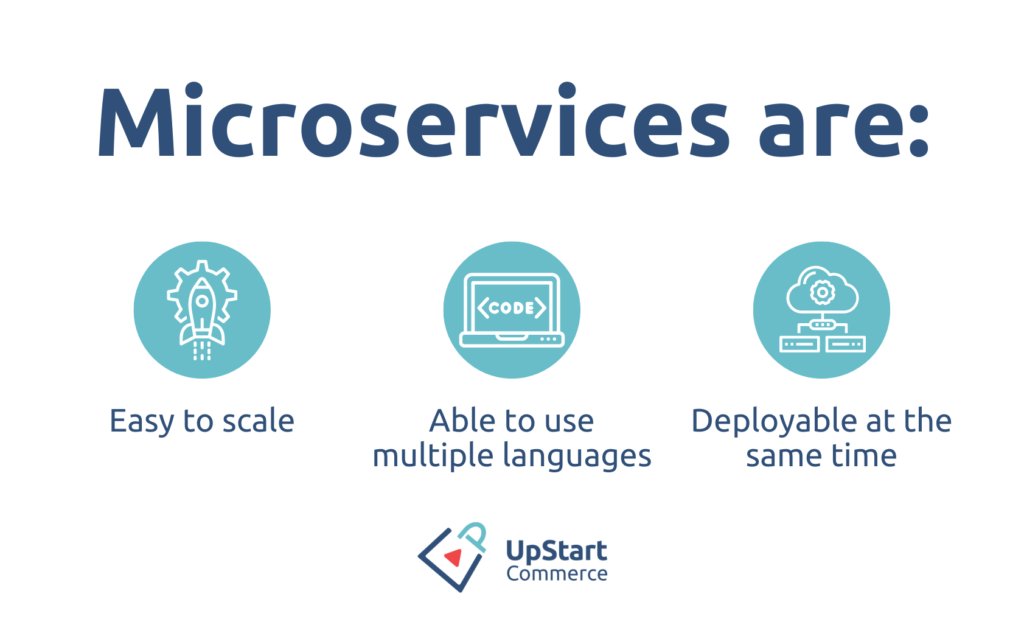The retail industry is constantly evolving, and businesses must adapt to customer expectations by implementing emerging technologies. Competitive retailers embrace change and innovative solutions, like microservice-driven platforms, that help them operate more efficiently and provide better experiences for their customers. Retailers that futureproof their ecommerce website by implementing microservices will never have to rebuild their platform from scratch again. According to Code IT, a software-providing platform, 81.5% of organizations are already using microservices. The future of ecommerce is in microservices and the sooner industry experts realize this, the more they’ll be successful.
In this blog, we explore the benefits of microservice-driven platforms and how they help retailers achieve their goals and remain competitive in the years to come. So, if you’re looking to stay ahead of competitors and futureproof your retail business, keep reading to learn how a microservice-driven platform can help you do that.

What are microservices? Microservices are a way of building software applications that breaks them into small, independent sections that work together to perform different operations. Microservices communicate with one another through an application programming interface, commonly known as APIs.
Think of microservices like toy robots. Instead of building a robot as one solid piece, microservices are made up of smaller interconnected parts like the head, arms, legs, and body. Each part is separate, but they all come together to complete the robot.
Microservices similarly break down a large software application into smaller, separate parts that each performs a specific function. This makes it easier to develop and maintain the application, as well as increases scalability and flexibility.
To put it simply, microservices are a way to make complex software applications more manageable and efficient.
Benefits of Microservices
As an ecommerce retailer, you want to collect and manage your customer’s name, date of birth, and email address in a specific, secure way. Using microservices, you can create a separate code base that focuses on capturing the email, name, and date of birth of your customers every time they sign up on your store. The data is now easy to collect without impacting the remaining form.
Microservices are:
- Easy to scale
- Able to use multiple languages
- Deployable at the same time

Microservices Simplify the Monolithic Architecture
Monolithic ecommerce architecture is a traditional way of building an online store where the components and functions, including shopping cart, payment processing, and product catalog, combine into a single, tightly-coupled software system. This creates a huge codebase that requires a lot of effort to maintain and manage and makes the platform difficult to scale.
Microservice-driven platforms divide each operation, or functionality, into a separate funnel where services are independent of each other. The codebase is simple, small, and easy to follow by the respective team. Changes are easy to test and are quickly deployable. Microservice-based architecture also improves scalability.
Developers quickly learn an individual microservice as it is comparatively less complex and requires less time to master. Therefore, a skilled DevOps team, a layer of efficient mechanisms, and quick decision-making can make the inclusion and expansion of microservices easy.
Importance of APIs in Microservices
Nordic Apis, an international community of API enthusiasts, suggests that 90% of developers use an API in some capacity. APIs and microservices go hand in hand. Microservice-driven platforms follow an API-first approach. APIs serve as a connector that triggers the functionality of a microservice. They enable microservices. Without them, microservice architecture would fail to work.
Difference Between APIs and Microservices
While APIs and microservices are related, they serve different purposes. APIs act as a gatekeeper, allowing different systems to communicate and exchange data. Whereas microservices provide a way to break down a large, complex application into smaller, manageable parts.
Here are 3 reasons why ecommerce retailers should consider replatforming to a microservice-driven platform:
Decreased Catastrophic Failures
Microservice architecture protects ecommerce platforms from complete failures since each operation is independent of others. By implementing microservices, when one component fails the rest of the application can continue to operate. This increases reliability and availability for customers.
Increased Reliability and Elasticity
By breaking down a complex application into smaller parts, development and testing can be done more efficiently, allowing businesses to go to market with new products and services faster. Businesses can rely on their platform more if the failures are easy to control and identify.
Teams can also identify the operations that are being used most often and then scale them. For example, if there are more customers that reach the cart microservice, but it keeps crashing, you can quickly scale the cart functionality in the respective microservice and deploy it in no time.
Fluid and Easy to Manage
There is no waterfall approach in a microservice-driven platform. Each of them moves at its own pace. Developers can use any language they are comfortable with to create a microservice. Microservices allow individual components to be updated and scaled independently. This makes it easier to add new features, improve performance, and handle increased traffic.
Organizations can combine microservices to provide a bigger solution or continue using them independently.
Case Study: Uber’s Expansion and Switch to Microservice-Based Architecture
Uber initially began in a single city. Therefore, monolithic architecture was enough to manage their platform. As the platform rapidly grew, Uber was unable to keep up with the integration and scalability of their business.
The following are 3 major challenges that convinced Uber to switch to a microservice-driven platform:
- Continuous rebuilding and testing of new features
- Locating and fixing bugs
- Scaling old and introducing new features at the same time
By dividing its single code base into multiple separate features, things were simplified for Uber. The driver and passenger modules are separate but connect through APIs. Each module has independent functionality- changes are made as per the requirements. Therefore, scalability is no longer an issue. If Uber wants to make any changes or updates in the billing services, they can do so without having to change every part of the codebase.
Read more on the topic of microservices in our blog How can Microservices Fuel your Ecommerce Platform?
Unleash Your Retail’s Full Potential with Microservices
Understanding the need to switch to a microservices-driven platform is essential before replatforming to a new architecture. Changes that are made on multiple levels present their own challenges and opportunities. Implementing microservices requires multiple skills and tools. But when it is done correctly, your new futureproof ecommerce platform will be easy to scale, secure, elastic, and efficient.
Have any more questions about the microservice platforms? Check out Upstart Commerce to get started.
